Carganico, Horst, born 27-09-1917 in Wrocław, Miasto Wrocław, Dolnośląskie, Poland. His father was Viktor Carganico, 
 a World War I Luftstreitkräfte pilot officer who later raised to the rank of Generalmajor in the World War II Luftwaffe. On 27-05-1945, age 57, Victor was shot by Russian soldiers on his estate near Angermünde. Horst joined Herman Göring‘s
a World War I Luftstreitkräfte pilot officer who later raised to the rank of Generalmajor in the World War II Luftwaffe. On 27-05-1945, age 57, Victor was shot by Russian soldiers on his estate near Angermünde. Horst joined Herman Göring‘s 
 Luftwaffe
Luftwaffe 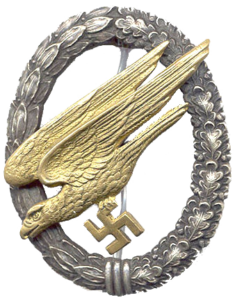 in 1937 and attended pilot school at Berlin-Johannisthal. At the outbreak of World War II Carganico was Technical Officer with the staff of Jagdgeschwader 1 (JG 1—1st Fighter Wing).
in 1937 and attended pilot school at Berlin-Johannisthal. At the outbreak of World War II Carganico was Technical Officer with the staff of Jagdgeschwader 1 (JG 1—1st Fighter Wing).  under command of Oberstleutnant Carl-Alfred “August” Schumacher
under command of Oberstleutnant Carl-Alfred “August” Schumacher  Schumacher was a prisoner-of-war from 1945 to 1947. He was subsequently hired by the district President of Aurich in 1948 and was working for the Olympia-Werke AG, in the typewriter industry, starting 1951. He was elected member of the Landtag in Lower Saxony as deputy of the All-German Bloc/League of Expellees and Deprived of Rights (GB/BHE) faction in 1953 and re-elected in 1955. He then joined the Deutsche Partei (DP) in 1958 and changed to the Christian Democratic Union faction in 1962. He lost his mandate in 1963 and died on 22-05-1967. age 71.
Schumacher was a prisoner-of-war from 1945 to 1947. He was subsequently hired by the district President of Aurich in 1948 and was working for the Olympia-Werke AG, in the typewriter industry, starting 1951. He was elected member of the Landtag in Lower Saxony as deputy of the All-German Bloc/League of Expellees and Deprived of Rights (GB/BHE) faction in 1953 and re-elected in 1955. He then joined the Deutsche Partei (DP) in 1958 and changed to the Christian Democratic Union faction in 1962. He lost his mandate in 1963 and died on 22-05-1967. age 71.
In April 1940, Horst served with II. Gruppe (2nd group) of Jagdgeschwader 77 (JG 77—77th Fighter Wing).  under command of Oberstleutnant Eitel Roediger von Manteuffel.
under command of Oberstleutnant Eitel Roediger von Manteuffel. 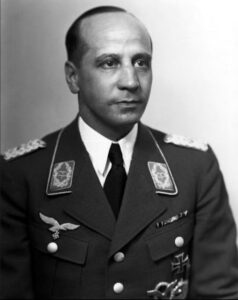 Manteuffel survived the war and passed away, age 88 on 31-07-1984 in Wiesbaden, Germany.
Manteuffel survived the war and passed away, age 88 on 31-07-1984 in Wiesbaden, Germany.
During Operation Weserübung (9 April – 10 June 1940), the German assault on Denmark and Norway, Carganico served as adjutant to Hauptmann Karl Aloys Franz Hentschel, 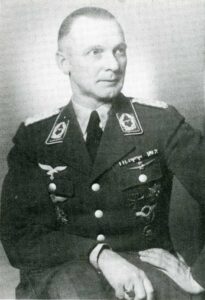 the commanding officer of II. Gruppe.
the commanding officer of II. Gruppe.
On 8 June, the German battleship Scharnhorst  was damaged in combat with the British aircraft carrier Glorious
was damaged in combat with the British aircraft carrier Glorious  and the two escorting destroyers Ardent
and the two escorting destroyers Ardent 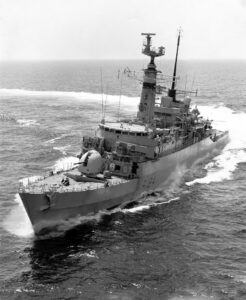 and Acasta.
and Acasta. 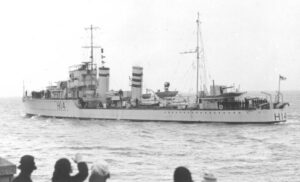 The Scharnhorst was taken to Trondheim for temporary repairs. Preliminary repairs were completed by 20 June, which permitted the ship to return to Germany. The following day, the Royal Air Force (RAF)
The Scharnhorst was taken to Trondheim for temporary repairs. Preliminary repairs were completed by 20 June, which permitted the ship to return to Germany. The following day, the Royal Air Force (RAF)  launched an aerial attack on the Scharnhorst. In defense of attacks against the Scharnhorst, II. Gruppe flew multiple escort missions from Stavanger-Sola. Between 16:00 and 18:00, the Gruppe engaged RAF bombers and torpedo bombers over the German ships. In this encounter, Carganico claimed the destruction of a Bristol Beaufort torpedo bomber, his first aerial victory. On 9 July, RAF bombers attacked Stavanger-Sola. The bombers were intercepted by fighters from II. Gruppe and Carganico shot down two Bristol Blenheim bombers.
launched an aerial attack on the Scharnhorst. In defense of attacks against the Scharnhorst, II. Gruppe flew multiple escort missions from Stavanger-Sola. Between 16:00 and 18:00, the Gruppe engaged RAF bombers and torpedo bombers over the German ships. In this encounter, Carganico claimed the destruction of a Bristol Beaufort torpedo bomber, his first aerial victory. On 9 July, RAF bombers attacked Stavanger-Sola. The bombers were intercepted by fighters from II. Gruppe and Carganico shot down two Bristol Blenheim bombers.
On 26-12-1943, after several more torpedo hits, the Scharnhorst settled further into the water and began to list to starboard. At 19:45, the ship went down by the bow, with her propellers still slowly turning.  British ships began searching for survivors, but were soon ordered away after just a few were pulled out of the water even though voices could still be heard calling for help from the darkness.[107] Of the crew of 1,968 officers and enlisted men, only 36 men survived.
British ships began searching for survivors, but were soon ordered away after just a few were pulled out of the water even though voices could still be heard calling for help from the darkness.[107] Of the crew of 1,968 officers and enlisted men, only 36 men survived.
 Memorial for the Scharnhorst’s crew, at Ehrenfriedhof in Wilhelmshaven
Memorial for the Scharnhorst’s crew, at Ehrenfriedhof in Wilhelmshaven
Carganico was promoted to Oberleutnant (first lieutenant) ![]() on 01-09-1940. Horst claimed his fourth aerial victory on 14 October over a Lockheed Hudson aircraft. On 9 November, II. Gruppe of JG 77 left Norway and headed to Aalborg Airfield and then to the airfield Brest-Süd, present-day BAN Lanvéoc-Poulmic, at the Roadstead of Brest in northwestern France by 23-11-1941. Patrolling the French coast, Carganico claimed his fifth victory on 30-11-1940 over a Blenheim bomber.
on 01-09-1940. Horst claimed his fourth aerial victory on 14 October over a Lockheed Hudson aircraft. On 9 November, II. Gruppe of JG 77 left Norway and headed to Aalborg Airfield and then to the airfield Brest-Süd, present-day BAN Lanvéoc-Poulmic, at the Roadstead of Brest in northwestern France by 23-11-1941. Patrolling the French coast, Carganico claimed his fifth victory on 30-11-1940 over a Blenheim bomber.
On 01-02-1941, a new I. Gruppe of JG 77 was created under the command of Hauptmann Walter Grommes. This unit was based at Stavanger-Sola and was tasked with providing fighter escort for German shipping on the southern and western Norwegian coast. Command of 1. Staffel (1st squadron) of JG 77 was given to Oberleutnant Carganico who had been transferred. As a commander, authors Bergström and Mikhailov characterize Carganico as a hard-core Nazi, unsympathetic and ambitious. On 24-05-1941, Carganico claimed his sixth aerial victory when he shot down Blenheim bomber L9267 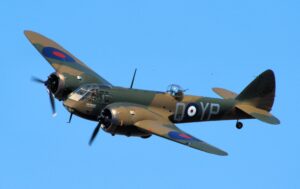 from No. 114 Squadron. The pilot was Sergeant (580185) Douglas Holland Seale.
from No. 114 Squadron. The pilot was Sergeant (580185) Douglas Holland Seale.
On 4 June, 1. Staffel was detached from the Gruppe and relocated to Kirkenes Airfield in preparation of Operation Barbarossa, the German invasion of the Soviet Union. In northern Norway, 1. Staffel became part of IV. Gruppe of JG 77 which in September was referred to as Jagdgruppe z.b.V. Petsamo (zur besonderen Verwendung—for special deployment) and headed by Major Hennig Strümpell.  Strümpell survived the war and passed away 31-07-2003, age 90, in Berlin.
Strümpell survived the war and passed away 31-07-2003, age 90, in Berlin.
In January 1942, Jagdgeschwader 5 (JG 5—5th Fighter Wing) 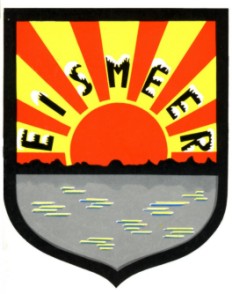 was newly created and placed under the command of Oberst Carl-Alfred Schumacher. On 03-01-1942, I. Gruppe of JG 77 was renamed and became the I. Gruppe of JG 5.
was newly created and placed under the command of Oberst Carl-Alfred Schumacher. On 03-01-1942, I. Gruppe of JG 77 was renamed and became the I. Gruppe of JG 5.
Carganico was appointed Gruppenkommandeur (group commander) of II. Gruppe of JG 5 on 01-06-1942, succeeding Strümpell who had been transferred. Command of 6. Staffel was passed to Oberleutnant Hans-Diether Hartwein. 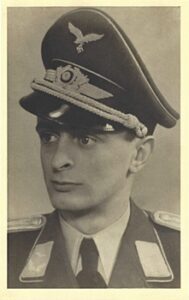 On 26 July, Stumpff wrote to the Luftwaffenpersonalamt, the personnel department within the Ministry of Aviation (RLM—Reichsluftfahrtministerium), requesting a preferential promotion for Carganico to Hauptmann (captain). Stumpff also requested that Carganico’s command of II. Gruppe be made permanently. Apparently, Carganico appointment to Gruppencommandeur had been temporary.
On 26 July, Stumpff wrote to the Luftwaffenpersonalamt, the personnel department within the Ministry of Aviation (RLM—Reichsluftfahrtministerium), requesting a preferential promotion for Carganico to Hauptmann (captain). Stumpff also requested that Carganico’s command of II. Gruppe be made permanently. Apparently, Carganico appointment to Gruppencommandeur had been temporary.
On 16-03-1944, the commander of I. Gruppe of JG 5, Major Erich Gerlitz, 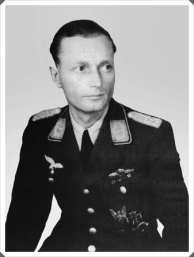 age 32, was killed in action. On 16-03-1944, Gerlitz was shot down in his Me 109 G-6, WNo. 162471. Gerlitz attempted to leave the aircraft with his parachute, but due to the low altitude, the parachute could no longer deploy.
age 32, was killed in action. On 16-03-1944, Gerlitz was shot down in his Me 109 G-6, WNo. 162471. Gerlitz attempted to leave the aircraft with his parachute, but due to the low altitude, the parachute could no longer deploy.
At the time, I. Gruppe was based in Herzogenaurach Airfield and was fighting the United States Army Air Forces (USAAF) in Defense of the Reich. Carganico succeeded Gerlitz as commander of I. Gruppe and at the same time was promoted to Major Carganico’s successor as commander of II. Gruppe of JG 5 was Hauptmann Theodor Weissenberger,  initially as acting commander until he was officially appointed on 16-04-1944 On 10 May, Carganico shot down the RAF de Havilland Mosquito PR.IX LR421 from the aerial reconnaissance No. 540 Squadron.
initially as acting commander until he was officially appointed on 16-04-1944 On 10 May, Carganico shot down the RAF de Havilland Mosquito PR.IX LR421 from the aerial reconnaissance No. 540 Squadron. 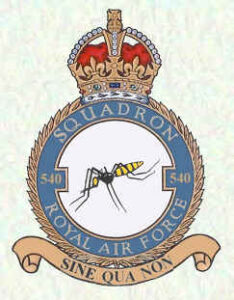 The Mosquito was shot down approximately 30 kilometres (19 miles) southwest of the Wiener Neustadt over Sankt Corona am Wechsel.
The Mosquito was shot down approximately 30 kilometres (19 miles) southwest of the Wiener Neustadt over Sankt Corona am Wechsel.
Death and burial ground of Carganico, Horst.
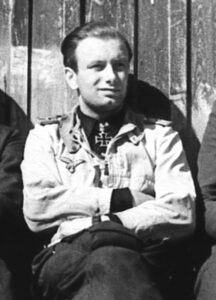
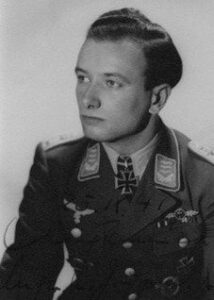


On 27-05-1944, five Luftwaffe Gruppen joined up around Karlsruhe to defend against an attack on southern Germany. The fighters were then vectored to a point of intercept southwest of Strasbourg where they were to engage USAAF bombers. On the approach, the German fighters were intercepted by USAAF fighters. Carganico lost his adjutant and wingman, Hauptmann Heinz Deuschle, early in the encounter, shot down by North American P-51 Mustang fighters. 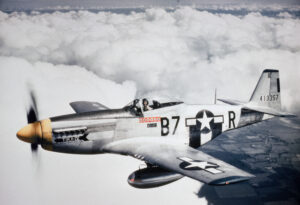 Attempting to evade the fighters, Carganico was killed when his Bf 109 G-5 hit high tension cables while attempting a forced landing near Chevry, 5 kilometres (3.1 miles) southwest of Saint-Dié-des-Vosges, France.
Attempting to evade the fighters, Carganico was killed when his Bf 109 G-5 hit high tension cables while attempting a forced landing near Chevry, 5 kilometres (3.1 miles) southwest of Saint-Dié-des-Vosges, France.  Bf 109 F-4/Z, assigned to Carganico in August 1942. Horst Carganico, age 26, was buried in the military section of the Waldfriedhof Zehlendorf on 06-06-1944. Command of I. Gruppe was given to Weissenberger, who took control of the Gruppe in early June 1944.
Bf 109 F-4/Z, assigned to Carganico in August 1942. Horst Carganico, age 26, was buried in the military section of the Waldfriedhof Zehlendorf on 06-06-1944. Command of I. Gruppe was given to Weissenberger, who took control of the Gruppe in early June 1944.






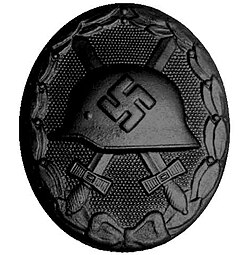














Leave a Reply